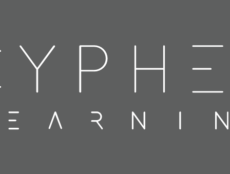
Articles
Hong Kong Will Maintain Internet Connectivity Subsidies for Households with Young Learners
By Henry Kronk
January 26, 2018
While the digital divide and issues regarding internet connectivity continue to plague countries around the world, the city of Hong Kong has led the way when it comes to connecting all students. The city’s Financial Secretary in 2011 proposed a two-pronged strategy to increase connectivity. In the summer of that year, the Office of the Government Chief Information Officer (OGCIO) launched the Internet Learning Support Programme (ILSP), dubbed “I Learn at Home.” The initiative subsidized computer hardware and internet access plans for eligible families and engaged NGOs to help facilitate internet and technology use among the more disaffected community members.
The Boys’ and Girls’ Clubs Association of Hong Kong (BGCA) and WebOrganic aided the city government in the latter approach.
In February of 2016, funding for the ILSP was extended through August 2018. But this summer, it is set to expire. When it does, members of the public who benefited from the program will face harsh realities.
 To begin, like many regions of the world that struggle to connect all members of society to the internet, there isn’t much competition among internet service providers (ISPs) in Hong Kong. In some communities, there is only one. Community members who received subsidized internet access fees may see as much as a 100% increase in their monthly bill.
To begin, like many regions of the world that struggle to connect all members of society to the internet, there isn’t much competition among internet service providers (ISPs) in Hong Kong. In some communities, there is only one. Community members who received subsidized internet access fees may see as much as a 100% increase in their monthly bill.
In addition, families who continue to struggle to adopt new technology will no longer benefit from the services provided by WebOrganic and BGCA.
Hong Kong’s Answer
In answer to the first issue, Hong Kong’s Student Finance Office along with the Social Welfare Department have teamed up to continue the internet access subsidy. The government has also made Wi-Fi available and free in each of the city’s 69 public libraries. The OGCIO has also been in the process of developing Wi-Fi-equipeed study rooms and learning centers operated by NGOs, many of which will be online early this year.
By the end of the current school year, it is also expected that every public school will be fully equipped with Wi-Fi for students.
Where There’s Internet, There May not Be Devices
Many schools are currently bring your own device (BYOD) and rely on students to come to class with the hardware necessary to complete coursework.
While huge bounds forward have been made in Wi-Fi availability throughout the city, many learners still do not have devices with which they can connect.
Hong Secretary for Innovation and Technology Nicholas Yang told Open Gov Asia, “The Government understands that the development of BYOD will increase the financial burden on students from low-income families. Thus, the Chief Executive’s 2017 Policy Agenda announced that the EDB would invite the Community Care Fund (CCF) to consider providing subsidy to needy secondary and primary students for purchasing tablet computers to conduct e-learning.”
That proposal is currently under development.
The Challenges of Increasing K-12 eLearning
The case of Hong Kong illustrates how, even in developed countries, the task of providing eLearning solutions for all students can be incredibly difficult. As more countries, however, adopt eLearning into their K-20 school systems, it is an issue that cannot be overlooked.
Even in the U.S., where nearly 85% of households with school age children are connected to the internet, millions of students do not have the adequate bandwidth to complete homework assignments. Known by some as the homework gap, in 2015 Pew researchers found that 5 million households with one or more kid enrolled in K-12 education do not have adequate internet access.
At the same time, some groups estimate that 70% of homework assigned by teachers requires high-speed internet.









No Comments